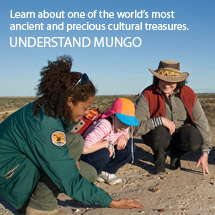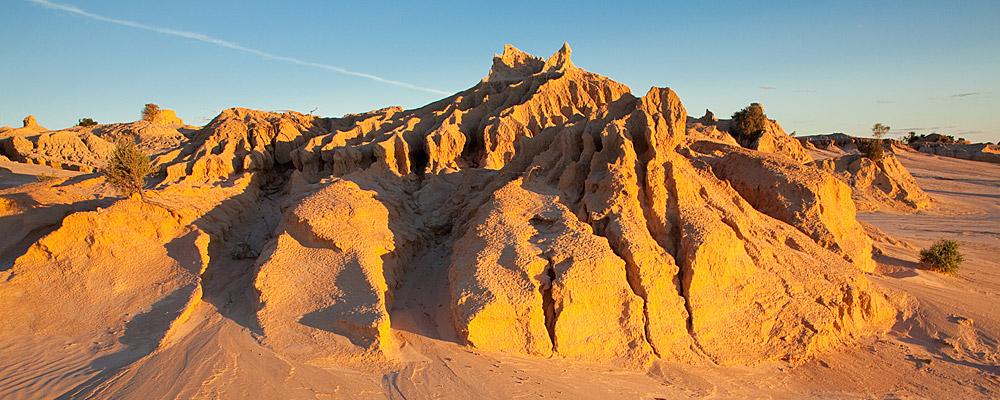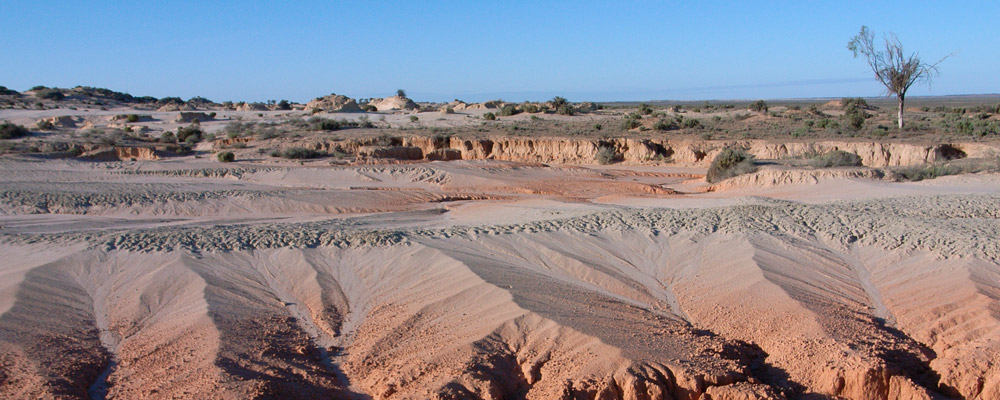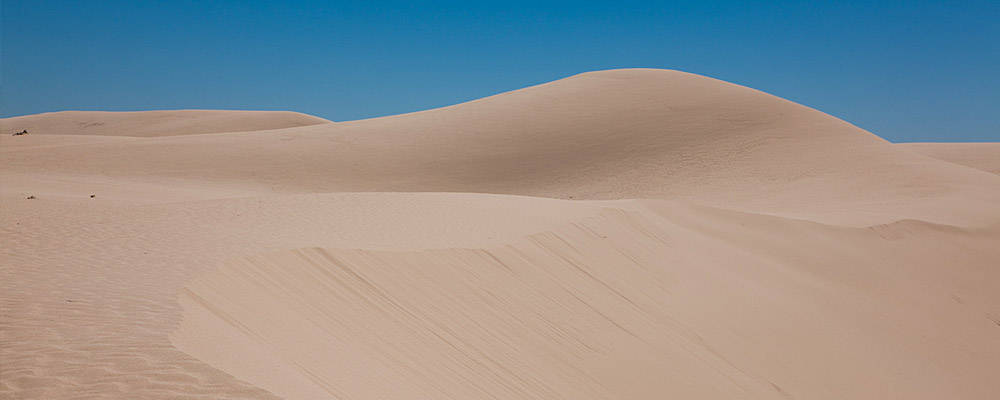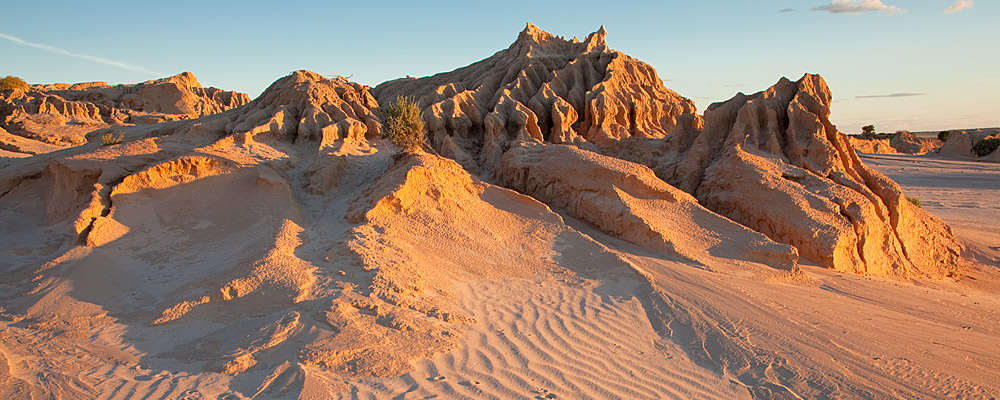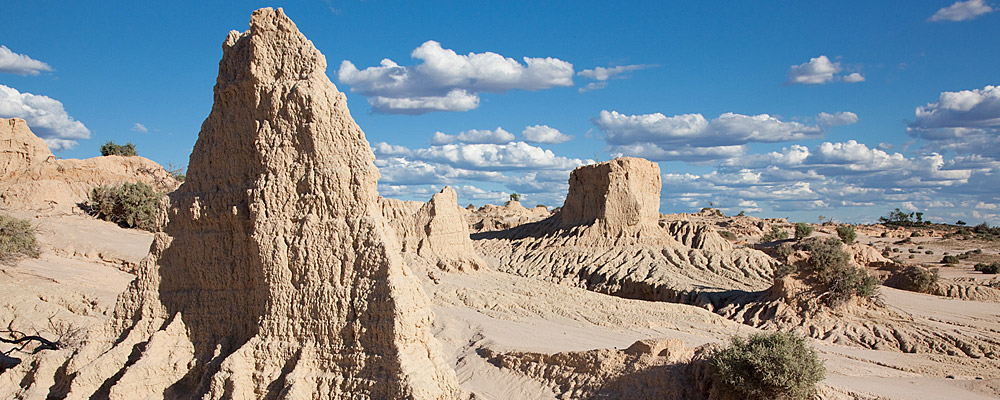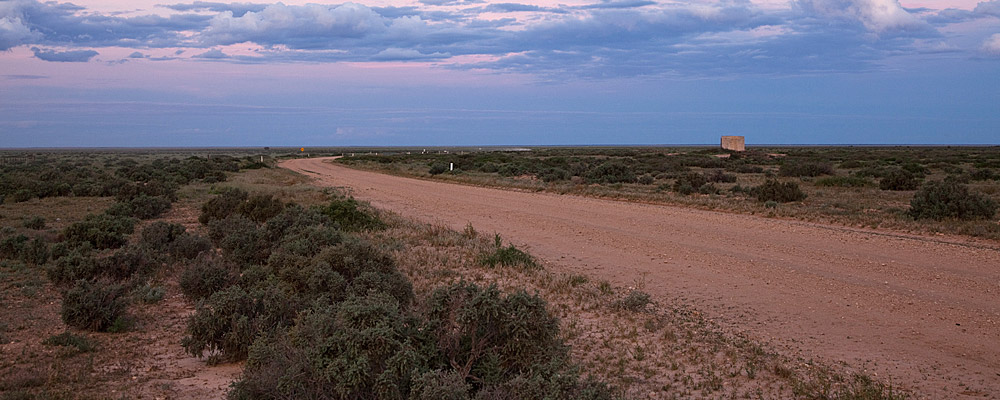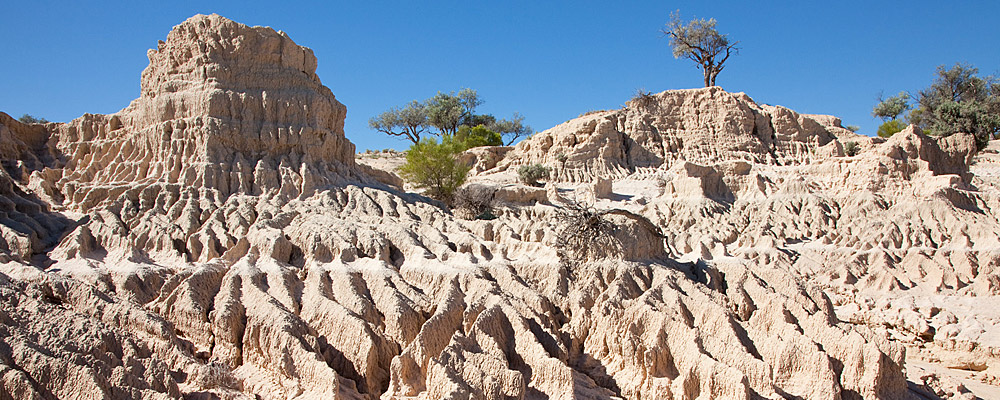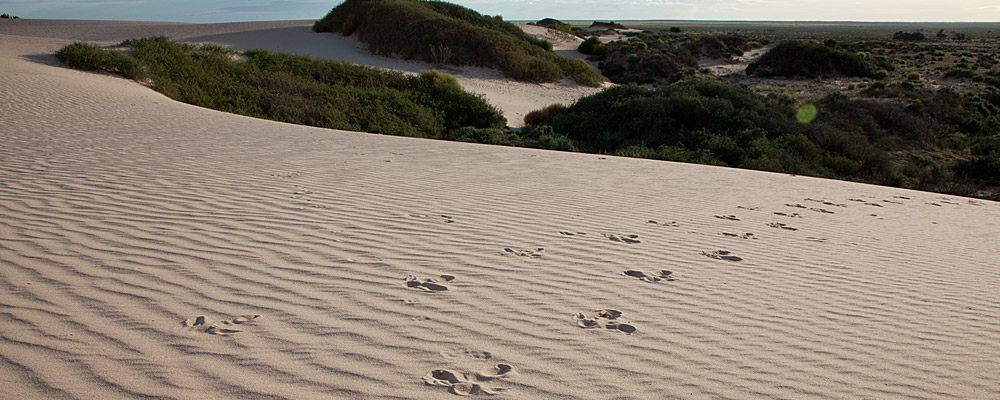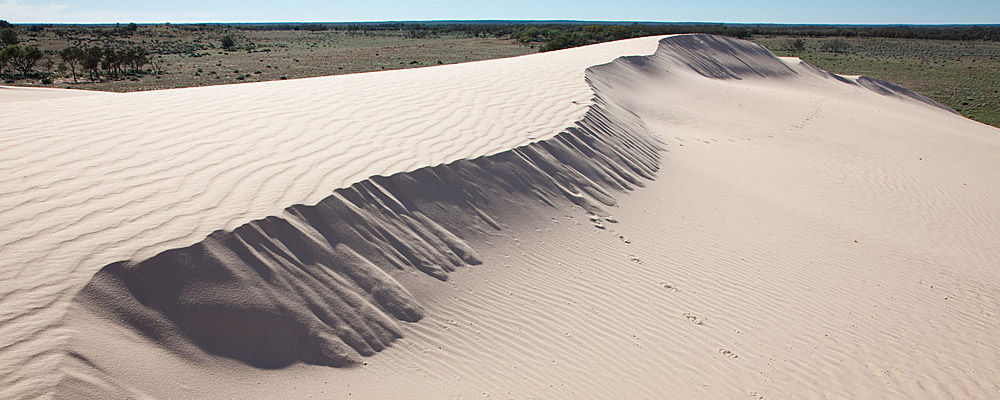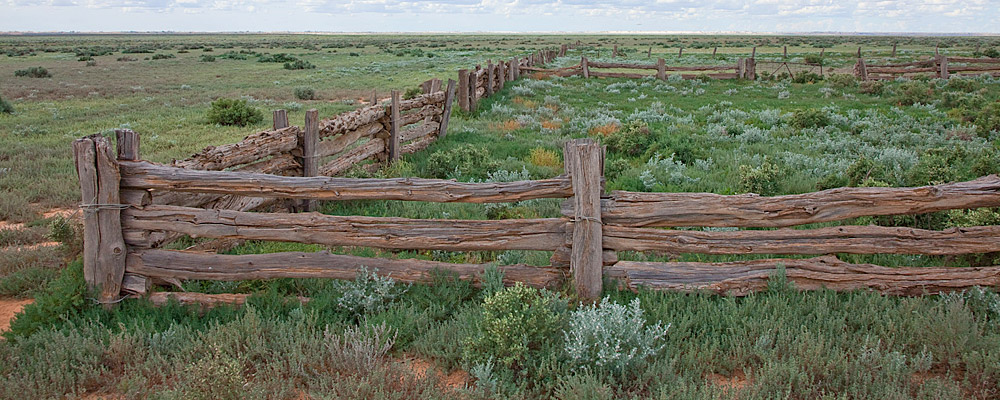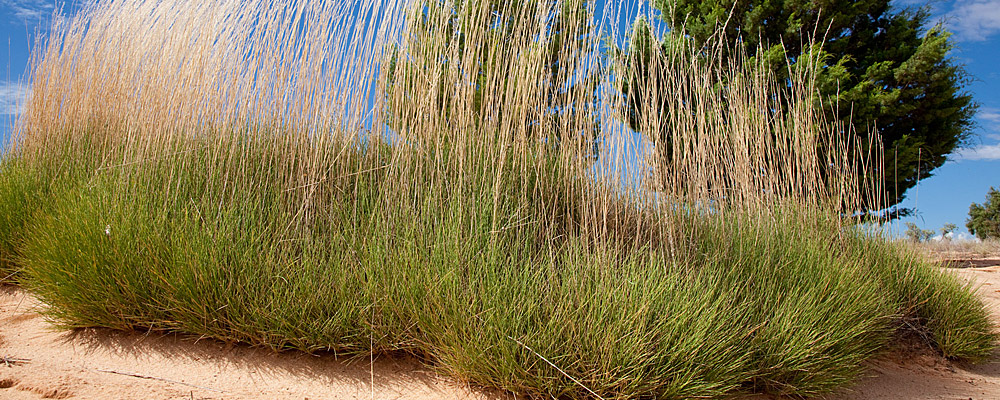Share Mungo Culture
Ancient Footprints
How did the footprints survive for so long?
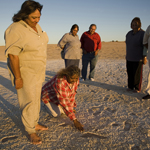
Like most fossils, very particular circumstances had to come together to preserve the footprints. The claypan is about 15 cm thick and composed of thin layers a type of magnesite rich clay that is not common in the Willandra Lakes area. The clay was probably blown out of the nearby lake basin in dry periods. When this clay dries out it sets very hard, like concrete.
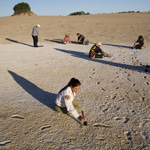
Even so, if the tracks had been out in the wind and rain for too long they would have been eroded away. So it is likely that they were covered over soon after being made, by dune sands blowing in from the west in the barren, windy climate of the Pleistocene. It was the covering sand that protected the tracks for most of those 20,000 years, before being partly blown away again in recent years. That is why sand was used again in 2006 to cover the tracks for protection.
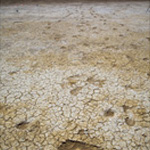
The footprint site widens our perceptions of a past society more graphically than other forms of archaeological study. It also presents an added dimension to our understanding of the morphology and physical capabilities of Pleistocene humans... The footprints are a rare glimpse into life at the height of the last glacial period.
Steve Webb, Matthew L. Cupper and Richard Robins, scientists
